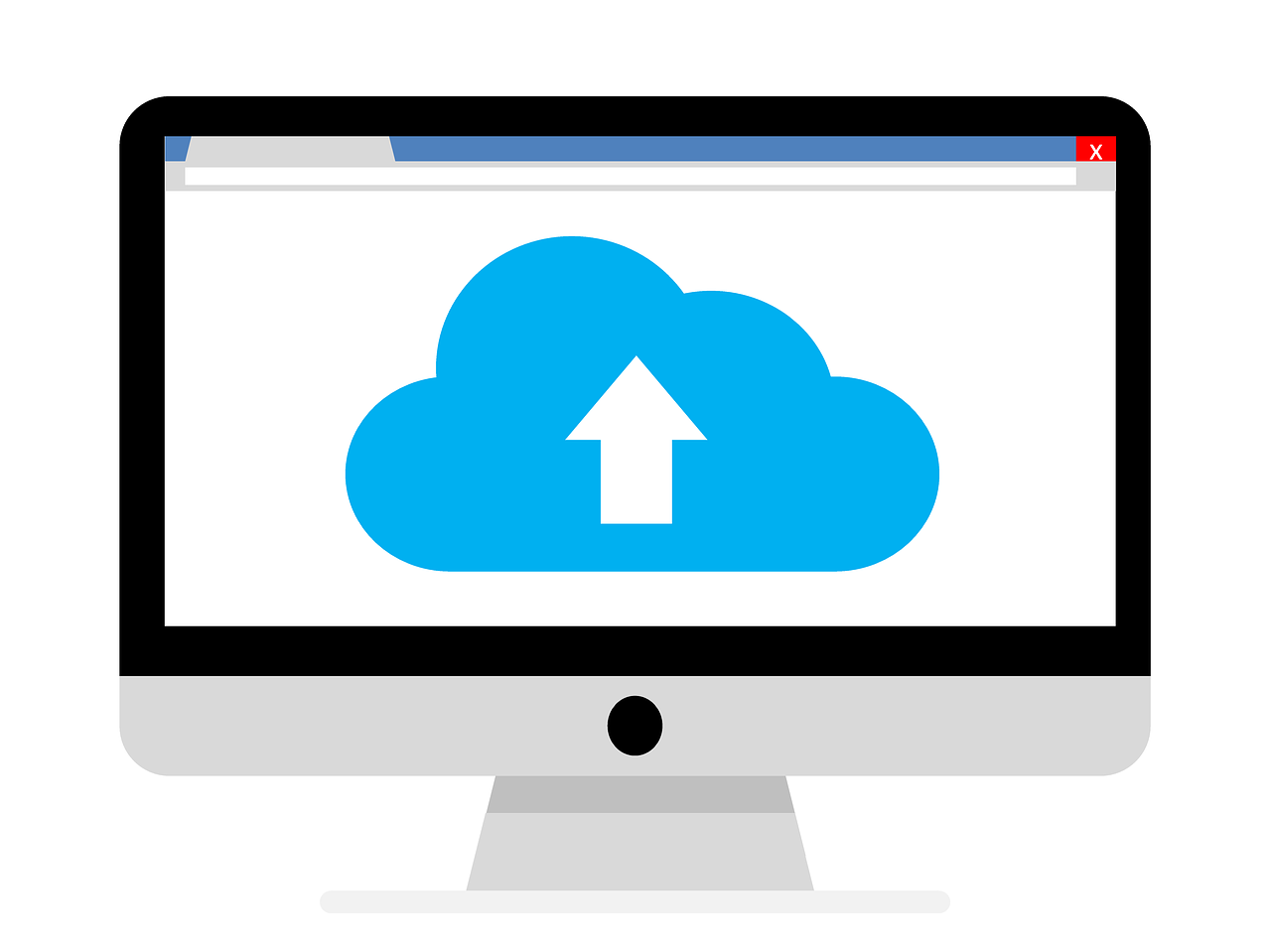Disadvantages of Cloud: What You Need to Know Before You Migrate
Published: April 2, 2025

Disadvantages of cloud From streaming films to managing global businesses, the cloud is transforming our lives and work. Modern technology enables cloud computing to be quick, flexible, and accessible from virtually every corner of the globe. Companies like Amazon Web Services, Google Cloud Console, and Microsoft Azure are now widely known and moving towards the cloud. Many people aren’t unaware of the many problems associated with the claims of digital independence. Cloud computing has real disadvantages, and knowing them is essential to making informed tech choices.
This isn’t an article stuffed with caution. Instead, it’s an examination of the dangers associated with cloud computing. In this article, we will discuss the numerous challenges that come with cloud computing and its use and provide some helpful examples, discuss the significance of the role of artificial intelligence in cloud computing, and finally, give the steps for avoiding the pitfalls associated with cloud computing. If you’ve ever thought of using cloud computing, the following sections will guide you through the things to avoid and the best way to prepare.
You’ll learn about cloud technology’s benefits in the article’s conclusion. Everything from issues with data security to increasing costs, being tied to one particular service provider, and relying on a shaky internet connection will be addressed. In addition, developing an efficient strategy for your journey to the cloud will be addressed. This article will be helpful for all, be it an IT professional, a business owner, or even an IT student, as it is filled with practical suggestions, straightforward language, and humorous comments. Step by step, let’s begin to learn about cloud computing.
Table of Contents
- What Is Cloud Computing?
- The Allure of Cloud: Why Everyone’s Jumping In
- Types of Disadvantages of Cloud
- Real-World Examples of Cloud Failures
- Security Risks in Cloud Computing
- Cost: The Hidden Money Pit
- Dependency on Internet Connectivity
- Vendor Lock-in and Lack of Flexibility
- Limited Control and Customization
- Data Loss and Recovery Challenges
- Artificial Intelligence and Cloud Downsides
- Actionable Tips to Avoid Common Cloud Pitfalls
- Choosing the Right Cloud Strategy
- Final Thoughts:
1-What Is Cloud Computing?

Disadvantages of cloud The storage of your apps or data in the cloud is like putting them in a digital locker instead of on the hard disk of your personal computer. You can access the applications remotely and benefit from the power and reliability of the expensive hardware infrastructure. Essentially, you’re paying to lease a part of a person’s luxury computer instead of purchasing and keeping it.
2-The Allure of Cloud: Why Everyone’s Jumping In
- Cost-effective: Pay only for what you use.
- Accessible: Work from anywhere.
- Scalable: Add or remove resources easily.
- Tools Galore: From analytics to AI, the cloud offers everything.
But hold on—just because it’s shiny doesn’t mean it’s flawless.
3-Types of Disadvantages of Cloud
Disadvantages of cloud Understanding the different disadvantages of cloud technology helps you prepare better. Here’s a quick overview:
1. Breaking of Security and Privacy
- If data is not adequately protected, it could be snatched away.
- Data storage is not under complete control.
2. Service Outages or Downtime
- Internet connection problems
- Service disruptions caused by the vendor’s part
3. Various Cost Increases
- Difficult pricing structures
- The inability to monitor services could cause an increase in spending.
4. Cloud Vendor Lock-In
- Problems with switching to the provider
- Integration issues
5. Lesser Flexibility to Make Changes
- Relying on the capabilities of the provider
Each one has its own distinct set of difficulties. Let us explore each in depth.
4-Real-World Examples of Cloud Failures
Disadvantages of cloud make errors, and the cloud has many issues. Here are some questions that you may be able to address.
- Clouds on Facebook misconfiguration (2021) was the reason that millions of users lost their service.
- Slack Services Outage: caused overloading of the Slack server’s architecture.
- Google services outage: the world’s largest superpower did not escape, and various interruptions to countries that relied on Google’s infrastructure ruined the business.
These events highlight how the Big Three are affected by the pros and cons of each cloud.
5-Security Risks in Cloud Computing

Disadvantages of cloud This one tops the list. Cloud servers are primary targets for hackers because they host so much sensitive data.
- Data breaches are common, especially if security practices are weak.
- Shared environments mean multiple clients on one server—raising the risk.
- Lack of control: You rely on the provider’s security protocols, which may not align with your business needs.
Actionable Tip: Secure encryption backed by strict access rules and understanding the provider’s security framework are crucial. The treasured treasure’s false cost can become too costly at a certain point.
6-Cost: The Hidden Money Pit
Disadvantages of cloud The cloud seems economical—but only for a little while.
- Initially, a low-cost plan is acceptable but will quickly become expensive as your requirements increase.
- Overlooked components like idle servers, data moving, and outside services can accumulate quickly.
- Pricing structures are frequently ambiguous and seldom unambiguous.
Any actionable tip: Constantly track your expenditure with pre-existing cost breakdown features and enable spending limit notifications.
7-Dependency on Internet Connectivity
Everything depends on the cloud: no signal, no service.
- A bad Internet connection leads to bad performance.
- Individuals living in rural areas are the most affected.
- Access and productivity are hindered by downtime.
Actionable Tip: Consider investing in a backup internet service and offline options for essential tasks.
8-Vendor Lock-In and Lack of Flexibility
Disadvantages of cloud It’s not as simple as changing phone plans. Due to various components, migrating to a different cloud provider can be more complex than anticipated. Your apps, data, and settings might not move seamlessly.
Unveiling a new platform can be expensive and time-consuming. Some providers implement proprietary technology that is not compatible with others.
Actionable Tip: Select service providers that endorse open standards and multi-cloud policies.
8-Limited Control and Customization
Disadvantages of cloud In cloud systems, sharing resources creates a system issue at the extent of the operating environment, making it hard to customize the resource in a way that is too personal.
- It is impossible to alter the computer’s hardware or software framework parameters.
- Specific advanced capabilities are gated or are available for purchase at a premium.
Actionable Tip: Consider alternative strategies that ensure the most vital components are stored on-site for extremely specific needs.
10-Data Loss and Recovery Challenges

Disadvantages of cloud Every system on the market has a certain degree of error; unfortunately, data loss is one of them.
- Each vendor has a backup strategy. You cannot guarantee how often or when backups will occur.
- Unintentional deletion, malicious or good-intentioned changes, and hacking can mean loss beyond possibility.
Actionable Tips: Create a backup strategy that is different from the one your provider uses.
11-Artificial Intelligence and Cloud Downsides
Disadvantages of cloud Innovative concepts such as AI adoption can come with a price for companies fully migrated to the cloud.
- Deep learning models trained using inadequate data can produce unexpected results. Some models are programmed to fail.
- Higher computation costs, which you can get in cloud services, will quickly jack up your bills.
- Security concerns regarding private information stored in the cloud third-party platform for training models also increase.
An actual example: A healthcare organization that relies on AI-based cloud applications could cancel one of its rollouts because its predictive models were not working due to untrained data or incomplete training, as well as unanticipated expenditures.
A helpful tip: Before you execute in cloud computing, you should test running a miniature AI model locally. Be attentive to the results generated.
12-Actionable Tips to Avoid Common Cloud Pitfalls
- First, determine your needs. Don’t just unthinkingly go with the cloud without a formal method.
- Review options: Review the terms and conditions, the flexibility, and the price.
- Develop multi-cloud strategies: Avoid dependence on a single vendor.
- Automated warnings: Ensure that the costs are reasonable.
- Improve your employees’ capabilities: Changing techniques and skills is a must when using the cloud.
- Check the SLA. Know what your service provider promises to provide and what he doesn’t.
13-Choosing the Right Cloud Strategy
Disadvantages of cloud services aren’t necessarily all created to be the same. You’re not restricted to only one option.
- Public cloud: Ideal for general applications shared among shared resources.
- Private Cloud: Ideal for sensitive workloads because of the dedicated environment.
- Cloud hybrid: Ideal for versatile workloads that require some on-premise resources and other tasks that can be performed in the cloud.
- Multi-cloud: Get rid of vendor lock-in and choose multiple service providers for different services.
You should base your decision on objectives as a business rather than just trendy trends.
Final Thought:
Disadvantages of cloud Absolutely, but only when you focus on the path ahead. Cloud roadblocks shouldn’t be daunting. However, they can help you think more. Buy an appropriate cloud instead of unthinkingly and without an exhaustive investigation.
Disadvantages of cloud Every system operates with trade-offs. Aside from its merits which include agility, data accessibility, and advanced technology, cloud computing comes with several disadvantages such as excessive cost, data loss, limited control, and other provider-related issues which can be detrimental in the long term.Follow the instructions we discussed in this course. You can stay abreast of cloud strategies and obviate their associated risks, thus enabling you to enjoy utilizing the cloud more safely.

- Be Respectful
- Stay Relevant
- Stay Positive
- True Feedback
- Encourage Discussion
- Avoid Spamming
- No Fake News
- Don't Copy-Paste
- No Personal Attacks



- Be Respectful
- Stay Relevant
- Stay Positive
- True Feedback
- Encourage Discussion
- Avoid Spamming
- No Fake News
- Don't Copy-Paste
- No Personal Attacks





